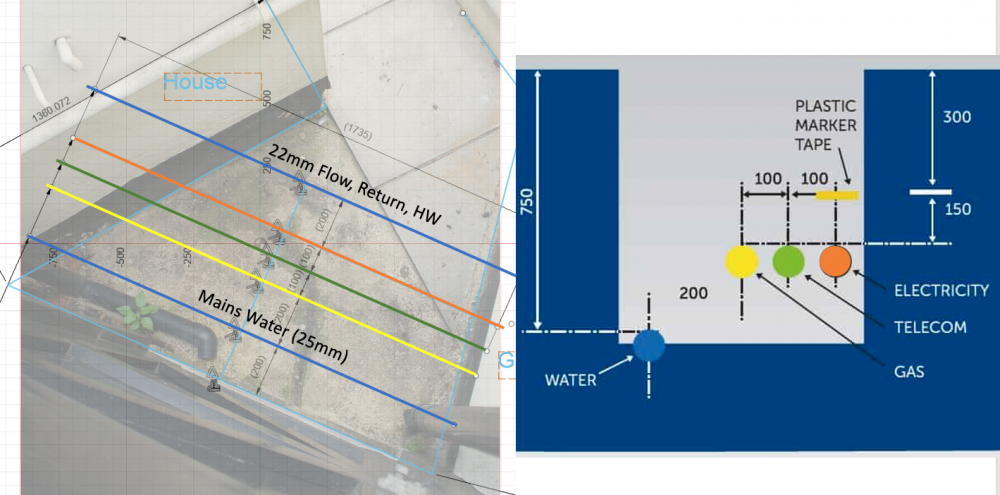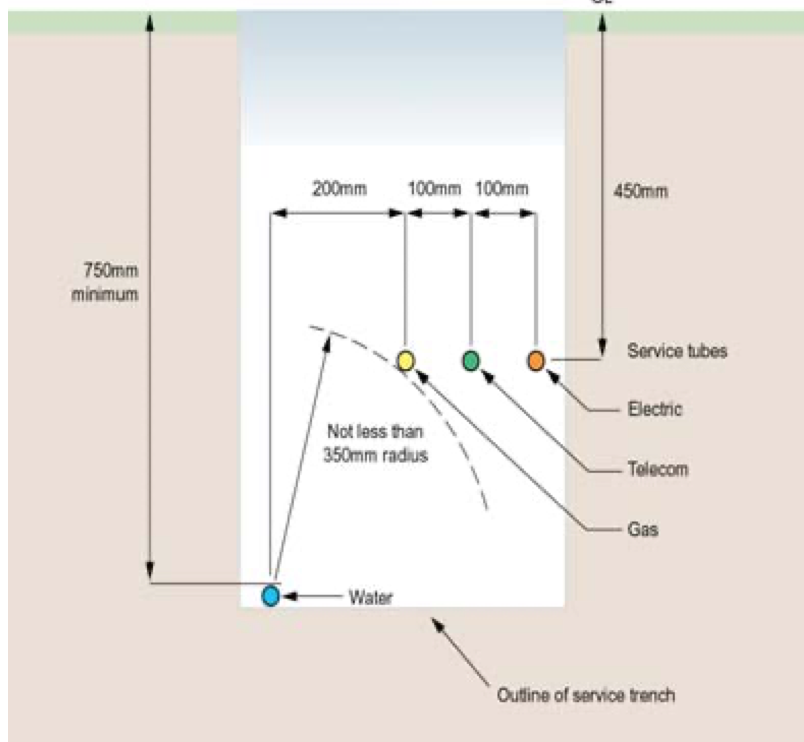Search the Community
Showing results for tags 'services trench'.
-
Hello everyone, I apologise to those who keep seeing posts from me about this wretched trench... I considered adding replies to one of my previous posts but thought they weren't quite covering the question of method statement. Anyway, the trench for services is to be excavated in a shared drive with neighbours' garages sitting on both edges of the drive. The drive is roughly 3 meters wide, so the works are a subject to a party wall agreement. There are already existing services in the drive - water, gas, electrics, BT. One of the neighbours is a surveyor, so he insists on covering all eventualities before he OKs the works. We've had a chat yesterday and agreed on a min distance from both properties that they'd be happy with. But he also wants a method statement detailing machinery, depths, widths, compaction methods, materials used and duration of works. Does anyone have any examples of method statements for these types of works? I attach a drawing of the drive with position of utilities. The contractor will do the trial pits as well. Many thanks Utility Detection Survey.pdf
-
Currently in the process of moving some services from our single storey main house to a single storey detached garage (which will be converted into a living space). I will need to run the services underground between the two buildings, a distance of less than 2 meters. Looking around I can see the depths and distances of the various services. I will clearly be getting the appropriate trades to run the pipes and cables but will most likely be digging the services trench myself. Given the sizes of the services (and protective conduit) I am concerned about weakening the foundations of both buildings. Should I be looking to put a lintel or steel in the footings above where the services will enter, much in the same way you would for building over drainage pipe or are the holes going to be insignificant overall? Structure of the garage is 215mm single skin blockwork, house is cavity wall standard brick Services to be brought through the footings Mains Water - MDPE Pipe insulated inside 110mm plastic drainage pipe Gas - Most likely 32mm TracPipe with 40mm sleeving Telecom - 25mm MDPE conduit Electricity - SWA inside 40mm conduit Hot Water from Boiler in garage to house - 3 x 22mm PB Barrier pipe individually insulated inside 110mm plastic drainage pipe
-
- lintel
- services trench
-
(and 1 more)
Tagged with:
-
I am coming to realise the difficulties challenges in working with thick, solid stone walls. Tell me if I am on the right lines here please? The walls are 600th, with high quality, largish but random blocks outside, decent but smaller blocks inside, and then rubble and lime infill between the skins. They extend about 300mm into the ground where they sit on 200mm or so of a sand-lime bed. Under that is virgin sand, dense and clean. This sand-lime bed is strong but will be diggable. The sand is a bit low for starting drains off. My plan for getting drainage pipes outside is to expose the bed on both sides, choose a nice long or big base stone that can act as a lintel, with similar to the other face, then form a horizontal hole underneath, just big enough for 100mm pipe. Then in will go a length of pipe on a slight slope, and promptly infill with sand-lime, packed into place. Perhaps for once, cement will be better than lime. 1m or so of pipe will also act as a joggle pipe in case of movement. How to form a neat hole? either with a drill and long chisel, and long trowel. OR will a 150mmbe the answer There will be about 7 of these to do, so the ease of doing it matters, as does keeping the height up. I am reasonably content with the structural implications, but am open to comment.
-
This seems to be the standard cross section of a services trench. For my build, I am thinking of having a single combined services trench bringing absolutely everything into my utility room so I am wondering how to to fit everything in: Why the 350 mm radius gap between the water pipe and the gas pipe? And why the separation between the other pipes? Where do drain pipes go (foul and rainwater)? Could they go in the gap underneath the gas/telecom/electric pipes/conduits? My falls would mean that they could well fit there nicely.




